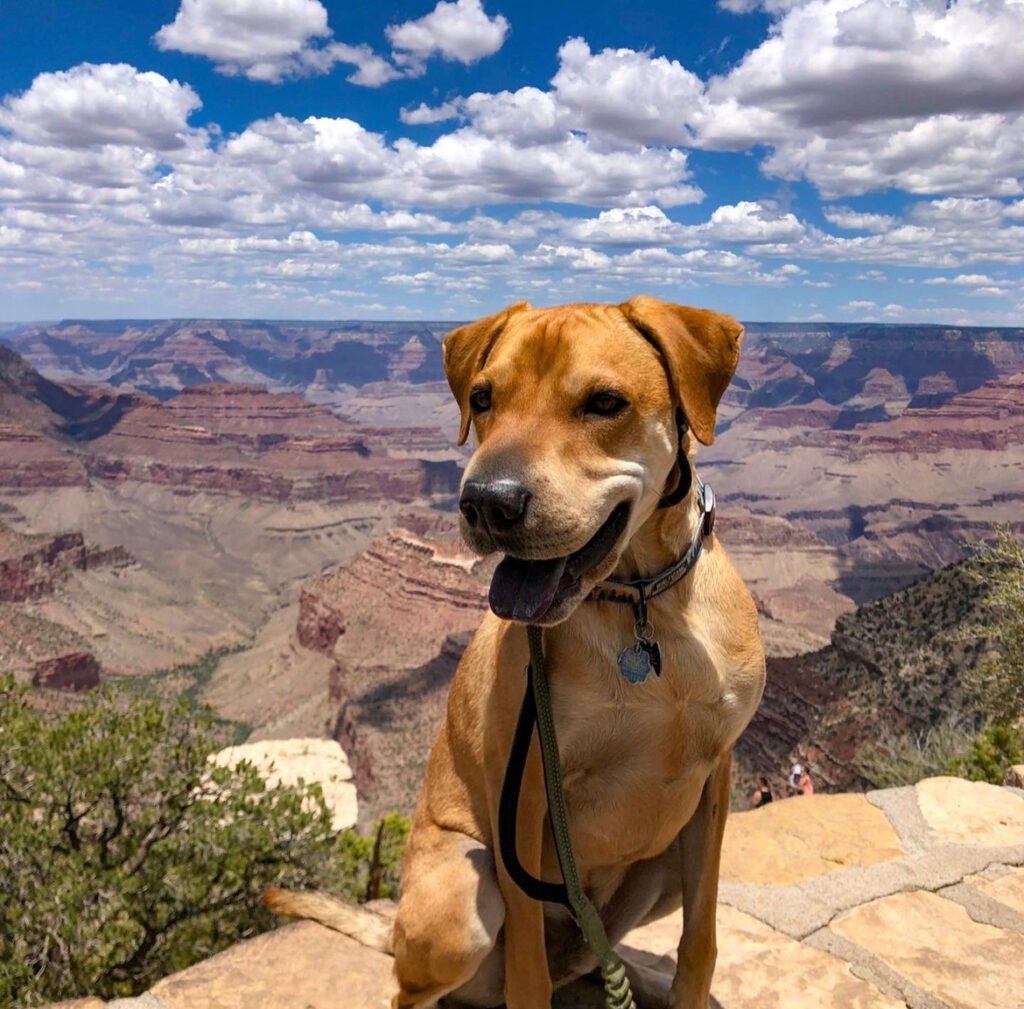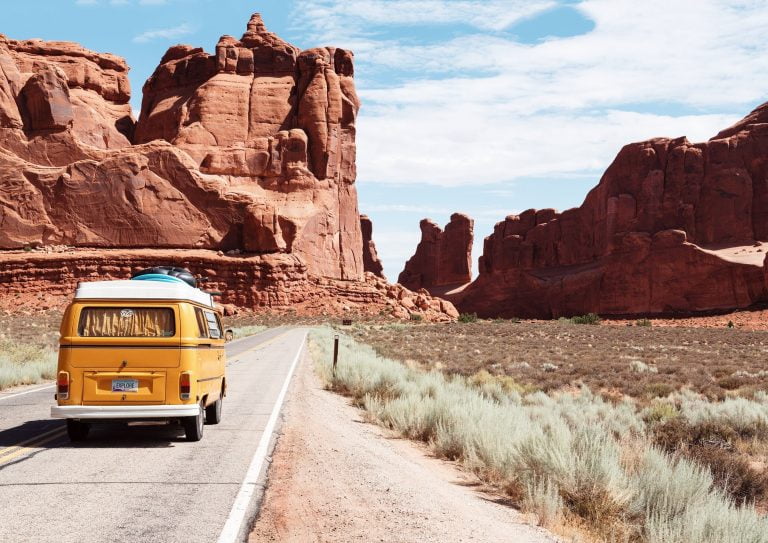First-Time Tent Camping With Your Dog: Tips & Checklist To Be Prepared!
So, you’ve decided to have an outdoor adventure and bring your four-legged best friend along. Camping with your dog can be a fun and rewarding experience. With so many new smells and room to run and explore, bringing your dog camping is a fantastic way to experience the Great Outdoors. Camping with your pup involves preparation to ensure their safety and enjoyment. Whether you’re a seasoned camper or a first timer, here are some essential tips and a checklist to help make your dog’s camping adventure a success.
Huey, my Shar Pei- Beagle mix, loves the outdoors. I have been taking him hiking and camping since he was a pup. Every time I get my backpack ready, he knows we are about to go on an adventure and gets the zoomies. He is always ready to go. Not only does he love trail hiking, but he loves bounding through snow and fields of wildflowers, playing in waterfalls, and snuggling up by the fire.
Katie Schreffler
Can I bring my dog camping?
First, you need to decide if your dog is going to be up for it. Many dogs love being in nature just as much as we do! Just like people, dogs have different personalities, activity levels, and age or health requirements. Assess your dog’s comfortability in the outdoors before taking them camping. Some breeds such as working dogs or those with high energy will gladly hike beside you or spend the night curled up next to you in a tent. Some dogs are happier lying comfortably on a couch than trekking through the wilderness.

Dogs who may not be ready for camping: Senior dogs, puppies, anxious dogs, those who aren’t behavioral trained yet.
Regardless, you can still find ways to enjoy the outdoors with your specific type of dog by evaluating their needs and adjusting your plans accordingly.
For example, senior dogs may love being outside but need low-impact activity. In this case, you may want to opt for camp camping in an area with little incline and bring a comfy bed for them to rest in. If your dog has anxiety, tends to be more vocal, or prefers to be off leash (while being trained to come when called), perhaps a busy campsite isn’t the place to be. Backwoods or dispersed camping may be a better option where there are fewer people, and your pup is free to be themselves.
Dog-friendly campsite
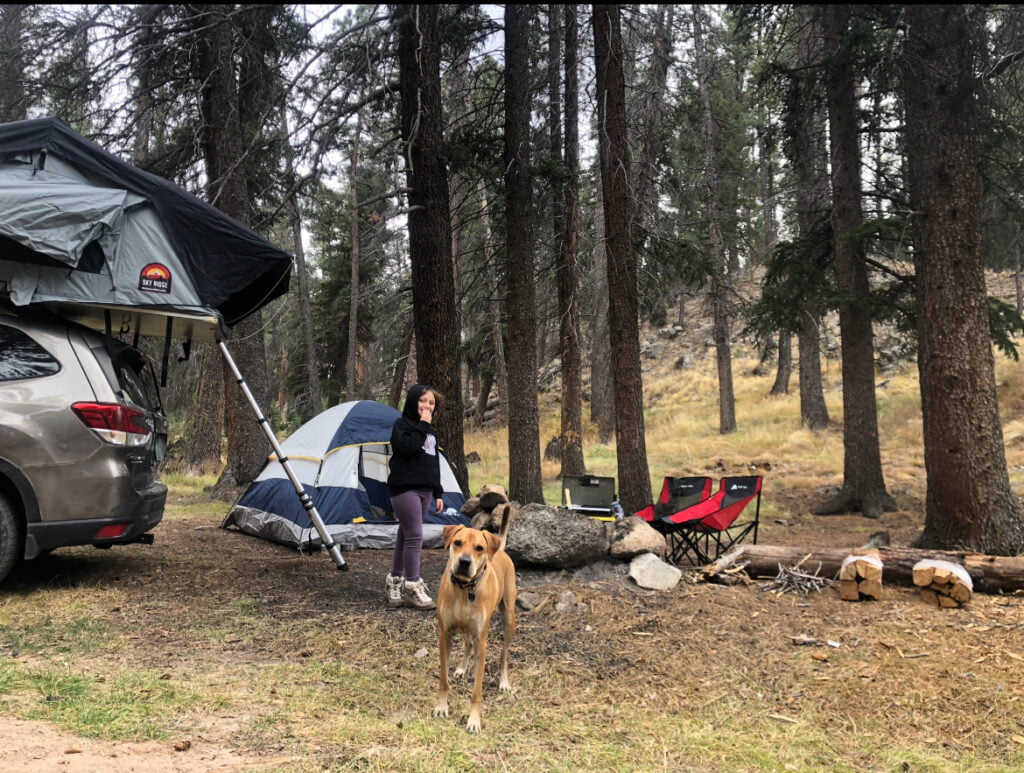
Always check if a location is dog-friendly before hitting the road. You don’t want to show up at a campsite ready for a great weekend only to find out that Fido is not allowed. Research campsites online or call ahead to verify if campsites or trails are dog-friendly, and any rules or regulations that may apply, such as if there are designated areas and leash laws.
Many National Parks allow dogs and sites such as recreation.gov or Campendium show if dogs are welcome at specific sites.
If you choose to stay in an established campsite where you must choose a numbered spot, try to select a campsite that is on the outskirts of the area with minimum foot traffic. This way your dog will have easy access to potty breaks. Decreased foot traffic may help cut down on your dog being disturbed at night.
One summer, I took my dog on a road trip where we ended up at Zion National Park. I was selected for a permit to hike Angel’s Landing. Dogs are not allowed on the trails in Zion, and we couldn’t leave him alone at the campsite, of course. Luckily, in areas like this, there are doggy daycare centers. I had documentation of his vaccine status and was able to leave him in a friendly, safe environment where he could socialize with other dogs, while we hiked. When I picked him up that night, tired sweaty, and dirty from an incredible hike, he was all tail wags. We both had a fun day and slept great that night under the Zion stars.
Katie Schreffler
Prepare for the Outdoors
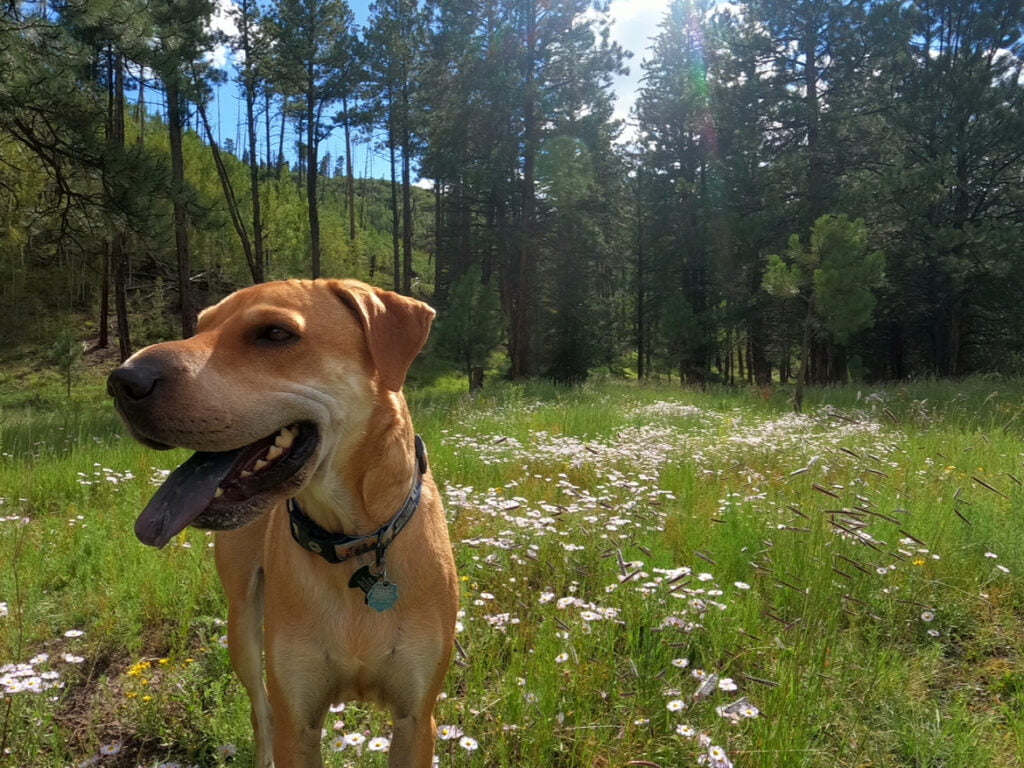
ID info and documentation– Make sure that your dog’s collar has up-to-date identification tags that includes your contact information in case they get lost. I’ve known people who have attached an Air Tag to their pet’s collar for GPS tracking. Bring a copy of your dog’s vaccine documentation or have the file on your phone.
Flea and tick treatment – Make sure your dog is up to date on flea and tick treatment and heartworm prevention. Pre-treat them before you go. Consult with your veterinarian to ensure your dog is up to date on vaccinations.
Check your dog daily– Check your pet every night to make sure they haven’t picked up any new friends while exploring nature. Have a tick remover on hand to remove any pests.
Cut nails– A doggy pedicure is important to make sure their paws are safe and comfortable while trekking through new terrain. Additionally, you won’t have to worry as much about their nails poking holes in your tent or air mattress if they are clipped and filed beforehand.
Check the weather before a camping trip – Severe weather or extreme temperatures can affect your dog’s comfort and safety. Make sure to check weather apps and prepare accordingly.
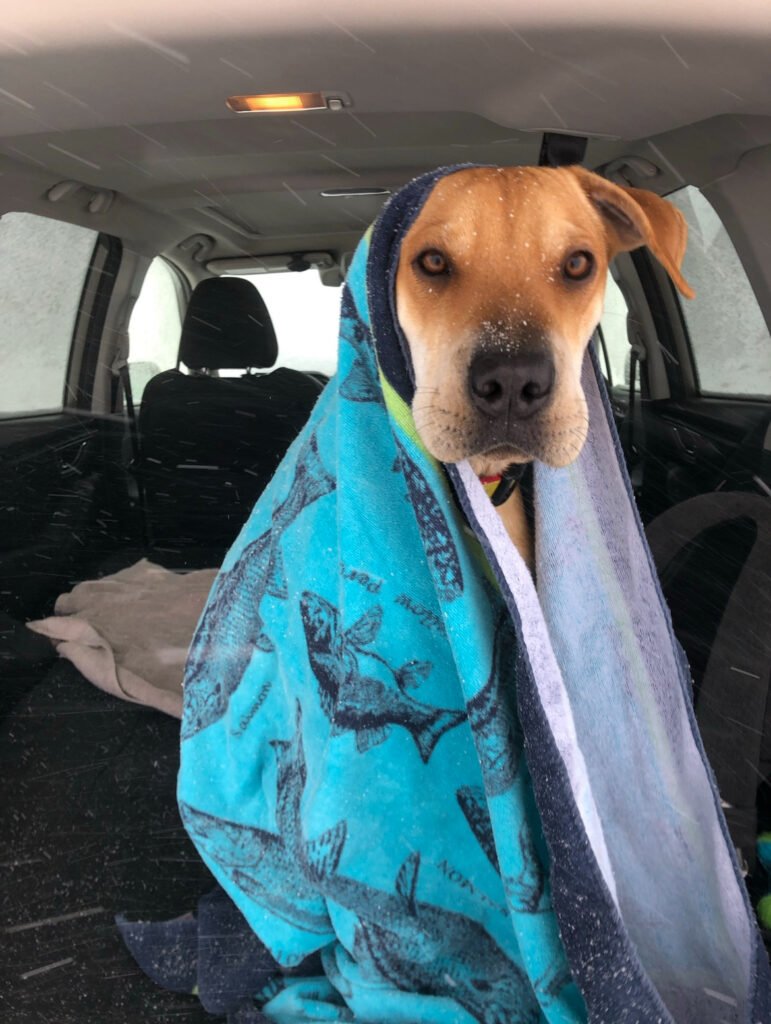
Shade– Make sure there are areas with shade, especially during the summer months. A pop-up tent or doggy tent can offer your pet shelter from the sun or rain if necessary.
Keep them hydrated– have fresh drinking water on hand and keep your dog hydrated, especially in hot or dry climates and after exertion.
Paw Protection – Be aware that high temperatures of stone or concrete can cause burns to paws. Consider using booties or paw balm to protect your dog’s paws from rough terrain.
Keep in Mind
Follow camping etiquette – Respect quiet hours and try to keep your dog from barking excessively at night or during the day.
Don’t leave your pet unattended – Never leave your dog unattended in a tent or at a campsite. You don’t want your dog to get hurt or run off and get lost or have an incidental encounter with wild animals or other camping guests.
Disposing of waste properly – Always pick up and dispose of your dog’s waste. Adhere to the Leave No Trace initiative and make sure to pack in what you pack out.
Respecting leash laws – Some campsites require dogs to be always on leashes and have 6’ leash laws. If this is the case, you will want to find an optimum place to tether your dog as soon as you get to the site. that allows them to reach food, water, shade, and you. Some sites allow dogs to be off leash. You’ll want to make sure your dog is trained well enough to come when called and is alright with socializing with other people and dogs.
Be mindful of Wildlife – Wildlife encounters can be unpredictable. Keeping your pet away from wildlife is essential to keeping your dog and the wildlife safe.
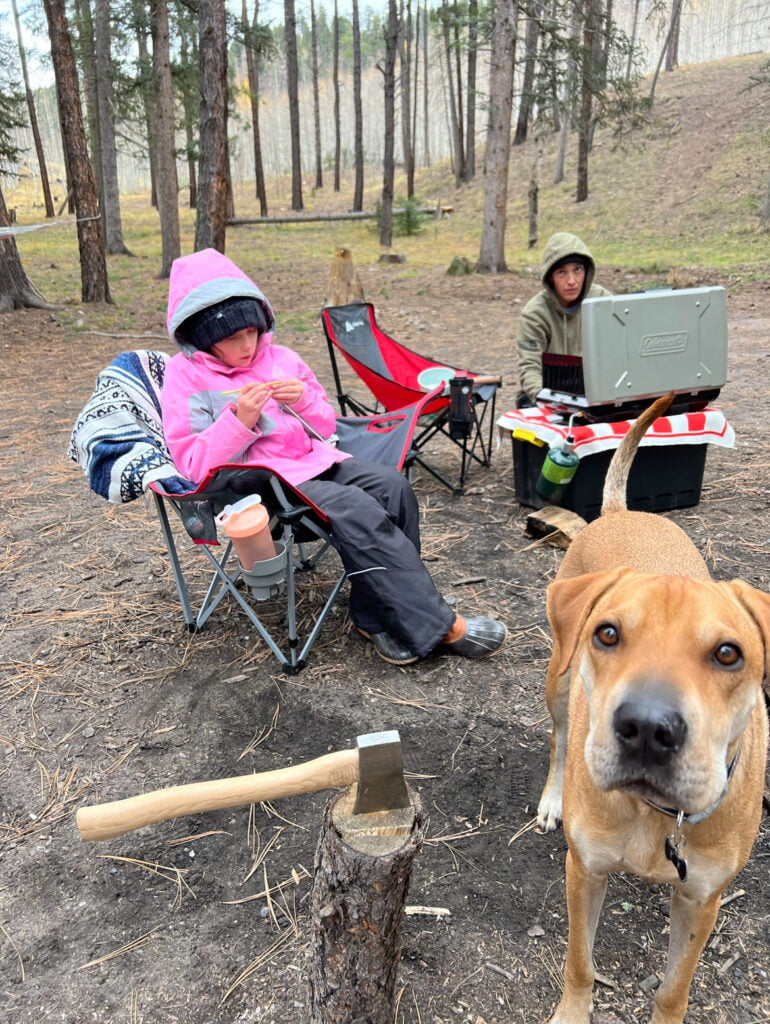
Checklist
Collapsible dog bowls – for easy storage and lightweight packing. Bring a food bowl and a water bowl.
Food and water– Bring enough food and water for the duration of your trip, then some extra in case of emergencies. Always have fresh drinking water on hand or a filtration system to provide clean drinking water.
Treats– Bring a baggy of your dog’s favorite treats to keep your dog motivated or for praise.
Waste bags and hand sanitizer – It is essential to clean up after your dog. Biodegradable, sustainable options are a win-win! Hand sanitizer or wipes are great to have on hand for quick clean ups.
Leash and harness or tether– A sturdy leash and harness to keep your dog secure and safe and a tether for extra mobility at campsites if there is a leash law.

Bed – Bringing your dog’s bed from home or their favorite blanket can help them sleep better in unfamiliar surroundings.
Towels – Extra towels to clean off muddy paws or dry off before entering the tent.
Toys– A durable waterproof toy such as a ball, bone, or tug rope can entertain while camping. A familiar toy, such as your pet’s favorite stuffy, will help your dog feel more at ease.
Dog backpack – some working dogs enjoy having a task. Bring your dog’s own backpack and allow them to carry treats, waste bags, etc.
Dog boots– Keep their paws safe from sharp, hot, icy, or rough terrain.
Reflective or light-up collar– to keep an eye on your furry friend after dark.
Dog first aid kit– A pet-specific first aid kit for any minor injuries. If your dog takes any medications at home, make sure you have enough on hand as well. You can buy a premade one or make one yourself.
Dog first aid kit supplies
- Sterile gauze and bandage tape
- Cotton balls
- Antiseptic spray or ointment
- Saline wound cleanser
- Hydrogen peroxide or activated charcoal (in case of ingestion)
- Diarrhea remedy (check with vet for recommendations)
- Allergy tablets such as Benadryl
- Tweezers
You’re first time tent camping with your dog may be a little challenging as it is new for both of you. The more you do it, the more comfortable you will both get. Be prepared, and patient, and enjoy the ride. Happy Camping!


